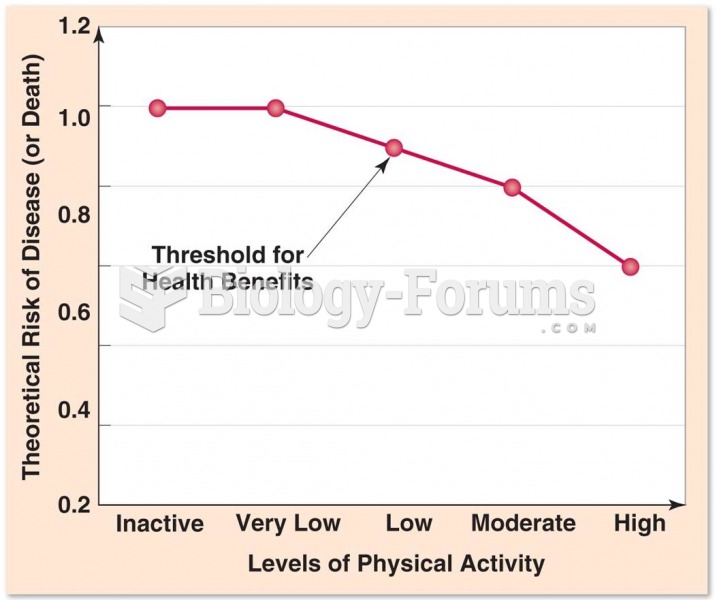Answer to Question 1
ANS: C
Secondary prevention is undertaken in cases of latent (hidden) disease. Although the patient may be asymptomatic, the disease process can be detected by medical tests. Nurses may use screening tests to assess for latent disease in vulnerable populations. Examples of screening tests used as secondary prevention strategies include the purified protein derivative (PPD) skin test for tuberculosis, fecal occult blood test for colorectal cancer, and mammograms for breast cancer. Primary prevention is instituted before disease becomes established by removing the causes or increasing resistance. Examples include the use of seatbelts and airbags in automobiles, helmet use when riding bicycles or motorcycles, and the occupational use of mechanical devices when lifting heavy objects. Tertiary prevention, also known as the treatment or rehabilitation stage of preventive care, is implemented when a condition or illness is permanent and irreversible. The aim of care is to reduce the number and impact of complications and disabilities resulting from a disease or medical condition. Interventions are intended to reduce suffering caused by poor health and assist the patients in adjusting to incurable conditions. Nursing care is focused on rehabilitation efforts in the tertiary stage of prevention. Holistic care is an approach to applying healing therapies. Nurses participate in holistic care through the use of natural healing remedies and complementary interventions. These include the use of art and guided imagery, therapeutic touch, music therapy, relaxation techniques, and reminiscence.
Answer to Question 2
ANS: C
Nurses can help patients establish a daily routine of care by educating them about how to manage their care and the symptoms associated with the condition, including emergency or life-threatening situations. Emphasis is on improving quality of life through preventive behaviors. The attitude of being a victim, suffering with, or being afflicted by a chronic illness is viewed by nurses as a counterproductive behavior that needs positive intervention. Nurses can assist patients with strategies that help them cope with their chronic conditions and associated feelings of anger, frustration, and depression. Encouragement and positive support from a professional nurse can help individuals gain control over the alternating periods of health and illness and improve their quality of life.






